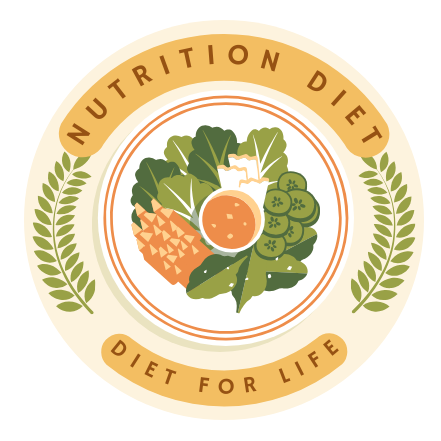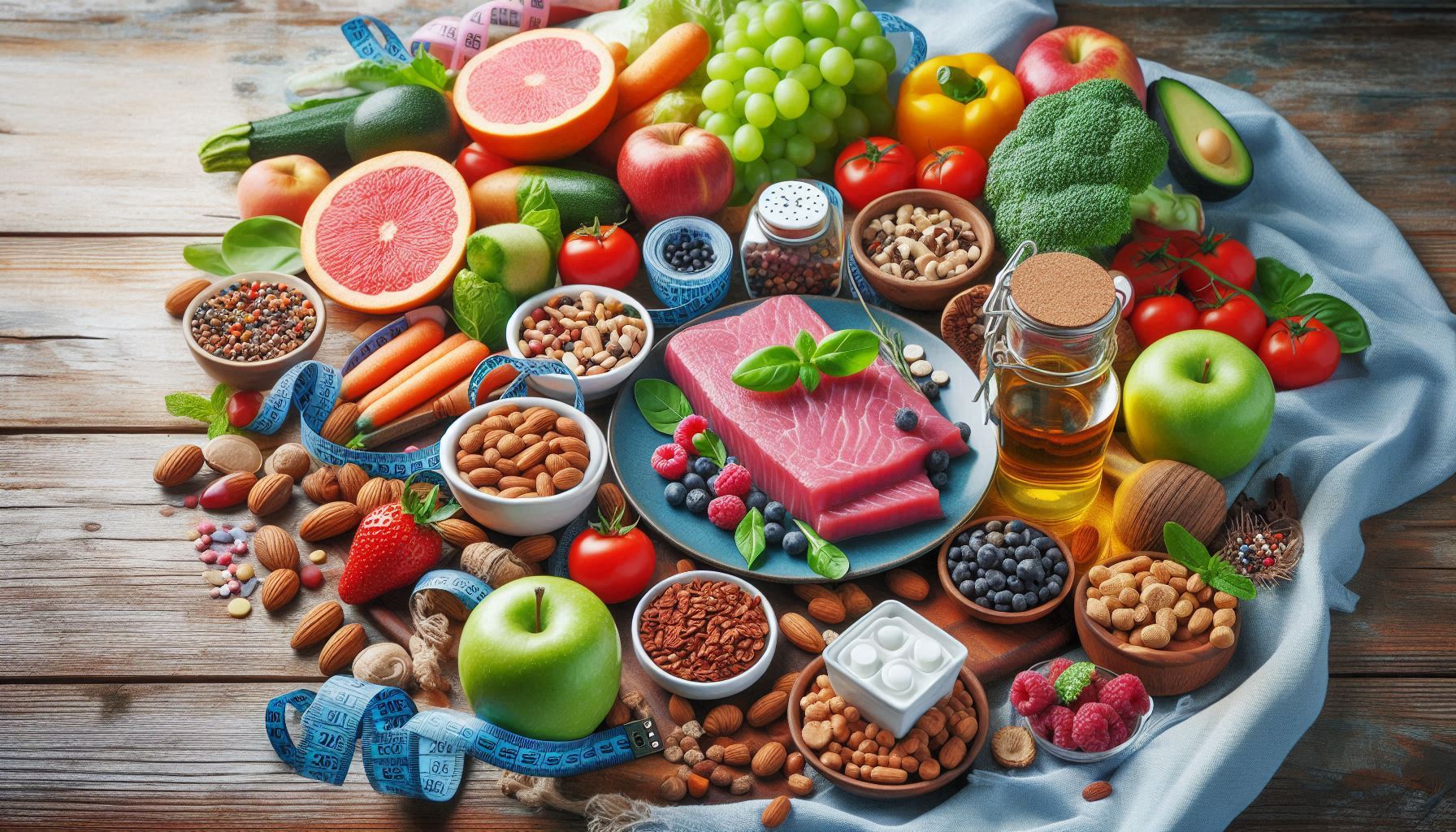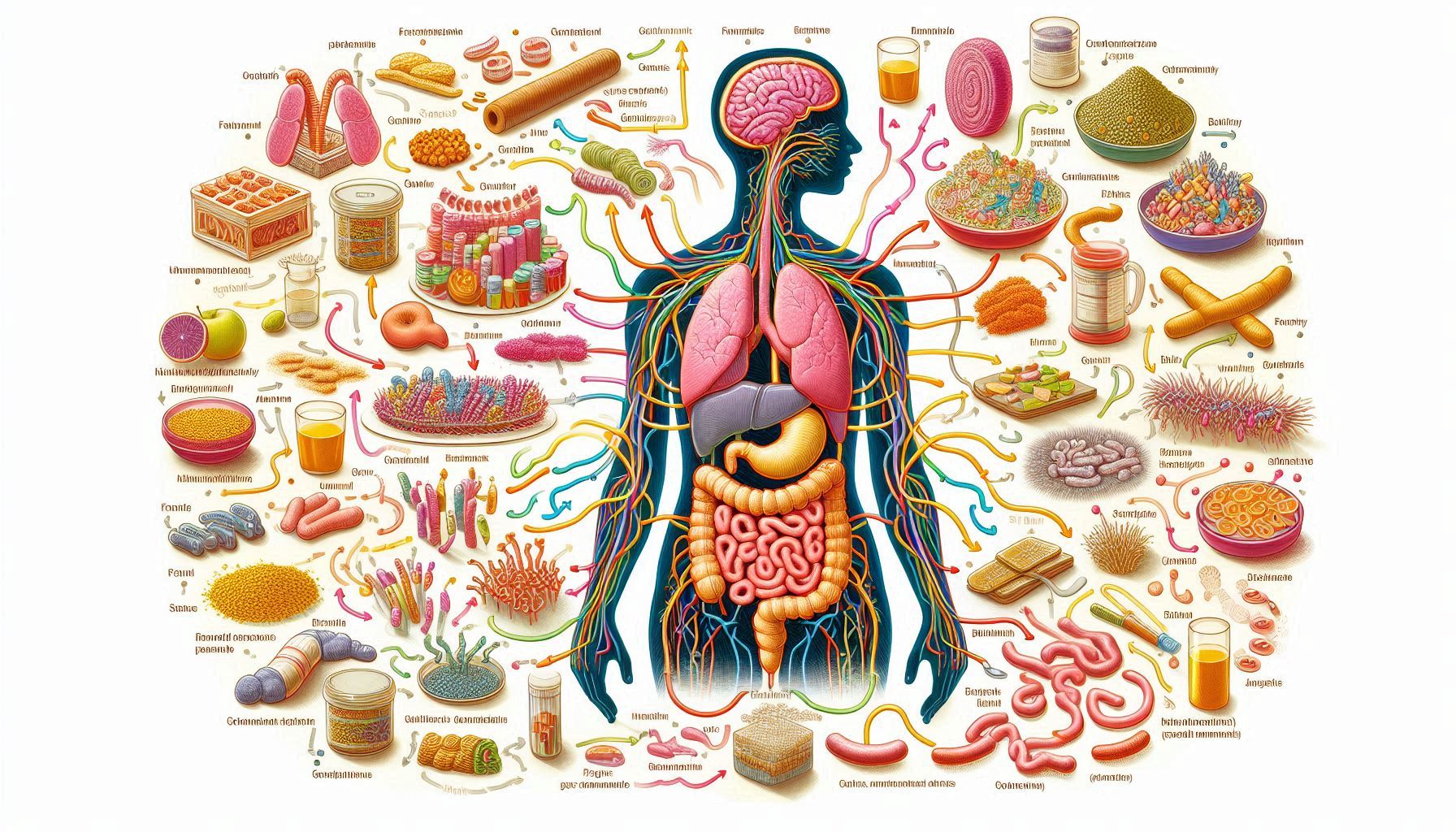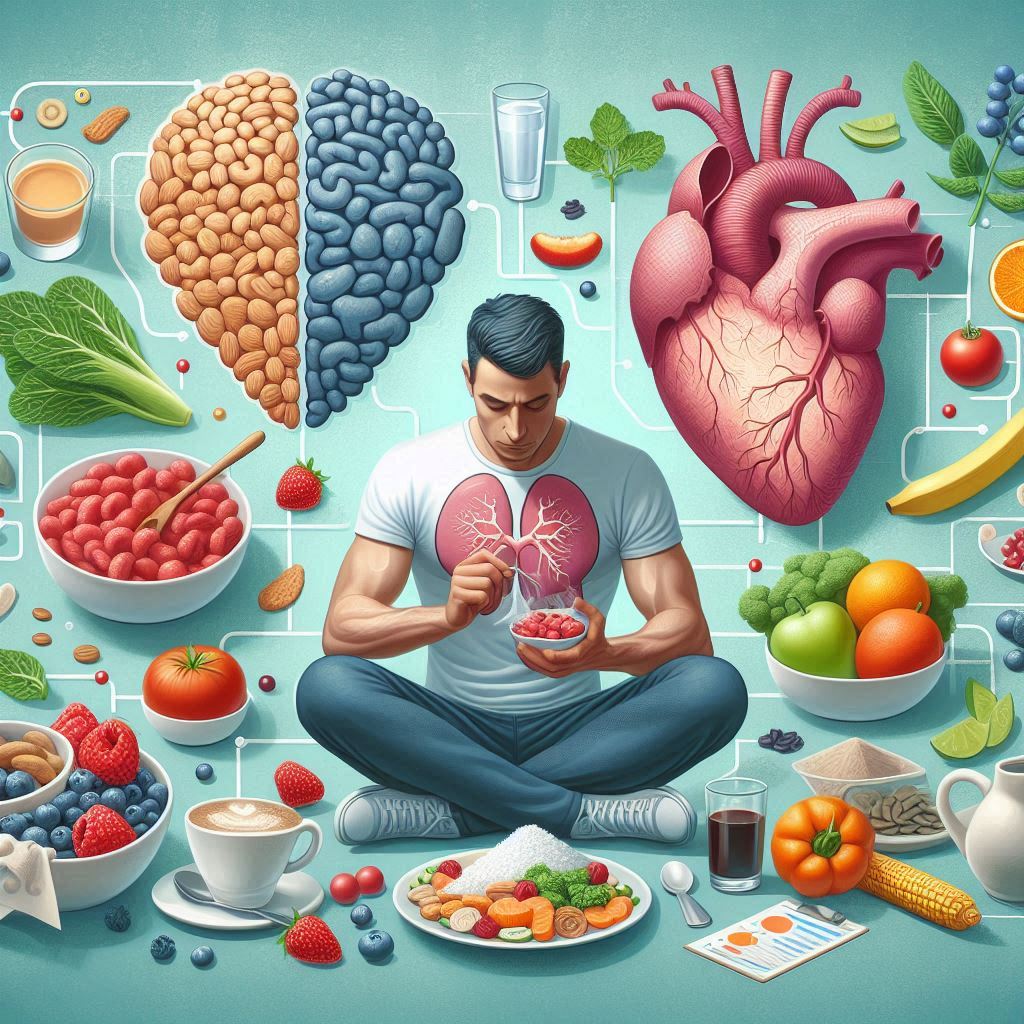Sustainable weight loss is a goal that many strive for, but long-term success remains elusive for most people due to the allure of short-term, restrictive diets. In today’s world, fad diets, “quick fixes,” and miracle products flood the market, promising rapid weight loss. However, research consistently shows that these approaches often lead to quick weight regain and may even cause long-term health issues. In contrast, sustainable weight loss requires a shift in mindset—focusing on adopting a balanced, nutritious lifestyle that prioritizes both physical health and mental well-being.
Rather than relying on extreme calorie restrictions or temporary trends, sustainable weight loss emphasizes the importance of nourishing the body with nutrient-dense foods, regular physical activity, and mindful eating habits. This approach is grounded in making gradual, consistent changes to daily habits, which helps create lasting results without compromising health.
A sustainable weight loss strategy involves incorporating whole foods, such as fruits, vegetables, lean proteins, and whole grains, while reducing processed foods high in added sugars and unhealthy fats. A moderate caloric deficit, combined with regular exercise, is essential for fat loss while preserving muscle mass. Additionally, factors like sleep, stress management, and emotional well-being play key roles in weight management.
In the long run, the key to sustainable weight loss is consistency and patience. Instead of focusing on drastic, short-term changes, successful weight loss comes from adopting a balanced, sustainable approach that can be maintained for life. By focusing on long-term health goals rather than quick fixes, individuals can achieve lasting weight loss and improve their overall quality of life.
Understanding the Basics of Weight Loss
Before delving into strategies, it’s crucial to understand how weight loss works in the body. Weight loss occurs when the body is in a caloric deficit, meaning it burns more calories than it consumes. This energy imbalance forces the body to use stored fat as a source of fuel, leading to fat loss. However, sustainable weight loss isn’t solely about cutting calories but about making smart dietary and lifestyle choices that ensure the body stays healthy and nourished throughout the process.
The Role of Metabolism in Weight Loss
Metabolism refers to the process by which the body converts food into energy. A person’s metabolic rate can influence how many calories they burn throughout the day. Factors like age, sex, muscle mass, and physical activity level all impact metabolism.
- Basal Metabolic Rate (BMR): This is the number of calories your body needs to maintain essential functions at rest, such as breathing and digesting food. BMR is influenced by genetics, age, and muscle mass. Those with higher muscle mass tend to have a higher BMR because muscle tissue burns more calories at rest than fat tissue.
- Thermic Effect of Food (TEF): When you eat, your body burns calories to digest, absorb, and metabolize the nutrients. Protein-rich foods increase the TEF because they require more energy to break down.
- Physical Activity: Exercise can significantly increase the number of calories you burn, and it’s one of the most effective ways to create a caloric deficit while preserving lean muscle mass.
Caloric Deficit and Sustainable Weight Loss
o lose weight, a caloric deficit must be created, meaning you consume fewer calories than your body burns. This can be achieved by reducing calorie intake and increasing energy expenditure through physical activity. However, it’s important to avoid creating too large of a deficit too quickly. Severe calorie restriction can lead to negative effects such as muscle loss, nutritional deficiencies, and an unsustainable weight loss approach. Rapid weight loss often results in the loss of lean muscle mass, which can lower your metabolism and make it harder to maintain weight loss over time.
A healthy and effective caloric deficit generally ranges between 250-500 calories per day, leading to a steady weight loss of about 0.5 to 1 pound per week. This gradual approach is much safer for the body and is more likely to result in lasting weight loss. By aiming for a moderate caloric deficit, you allow your body to burn fat while preserving muscle, which is essential for maintaining metabolic function and overall health.
Slow and steady weight loss is the key to long-term success. Unlike extreme diets that promise quick results, a gradual approach helps prevent the common pitfalls of rapid weight loss, such as rebound weight gain. Furthermore, it allows you to adopt healthy, sustainable eating habits and lifestyle changes that can be maintained in the long run. By focusing on consistent, moderate calorie reduction, you can achieve a balanced, sustainable weight loss that supports both physical health and emotional well-being.
Key Nutrition Strategies for Sustainable Weight Loss
Prioritize Nutrient-Dense Foods
A common mistake in weight loss is focusing too much on calorie restriction without considering the quality of the food being consumed. Nutrient-dense foods provide a higher concentration of vitamins, minerals, fiber, and protein per calorie compared to processed foods, which are often calorie-dense but nutrient-poor.
- Vegetables: Leafy greens, cruciferous vegetables (broccoli, cauliflower, kale), and root vegetables (sweet potatoes, carrots) are low in calories but high in essential nutrients and fiber. Fiber helps keep you full, prevents overeating, and supports digestive health.
- Fruits: Fruits like berries, apples, pears, and citrus fruits are packed with fiber, antioxidants, and vitamins. They can satisfy sweet cravings while providing important nutrients. Some fruits, such as grapefruit and apples, also have a thermogenic effect, meaning they may slightly increase calorie burn.
- Whole Grains: Unlike refined grains, whole grains like oats, quinoa, brown rice, and barley are rich in fiber, which helps with digestion and provides lasting energy. Fiber-rich foods also regulate blood sugar levels, reducing the likelihood of overeating.
- Lean Proteins: Protein is crucial for weight loss because it helps build lean muscle mass and keeps you feeling fuller longer. Opt for sources like chicken, turkey, lean beef, fish, tofu, and legumes (beans, lentils). Protein is also thermogenic, meaning the body burns more calories to digest it compared to fats or carbohydrates.
- Healthy Fats: Fat is an essential nutrient that supports cell function, hormone production, and nutrient absorption. However, not all fats are equal. Focus on healthy fats like those found in avocados, olive oil, nuts, seeds, and fatty fish (salmon, mackerel, sardines).
Embrace a Balanced Macronutrient Ratio
A balanced intake of macronutrients—carbohydrates, proteins, and fats—is essential for sustainable weight loss. Each macronutrient plays a different role in the body and has a unique impact on satiety, metabolism, and overall health.
- Carbohydrates: While low-carb diets have gained popularity, carbohydrates are a crucial energy source. It’s essential to focus on complex carbohydrates like whole grains, legumes, and starchy vegetables instead of refined carbs (white bread, pastries, sugary snacks). Complex carbs are digested slowly, which helps keep blood sugar stable and provides sustained energy.
- Proteins: As mentioned, protein is essential for preserving muscle mass during weight loss. It’s also the most satiating macronutrient, meaning it helps control hunger. Aim to include a good source of protein with every meal—especially in the morning and after workouts.
- Fats: Healthy fats should make up about 20-35% of your total daily calorie intake. Including healthy fats in your diet can help you feel satisfied, preventing cravings and overeating. Healthy fats are also important for brain function, heart health, and hormone regulation.
Create a Sustainable Caloric Deficit
A moderate caloric deficit of around 250-500 calories per day is recommended for healthy and sustainable weight loss. This can be achieved by slightly reducing your caloric intake or increasing your physical activity level, or both.
- Avoid Severe Caloric Restriction: Extreme calorie cuts can cause your metabolism to slow down, leading to muscle loss and potential nutrient deficiencies. Additionally, overly restrictive diets are difficult to maintain long-term, and they often result in rebound weight gain once normal eating resumes.
- Focus on Food Quality: When aiming to reduce calories, choose nutrient-dense foods rather than empty-calorie options like sugary snacks or fried foods. This ensures that you’re still receiving the essential vitamins, minerals, and fiber needed to stay healthy.
Meal Planning and Mindful Eating
Meal Planning for Success
Effective meal planning is a cornerstone of sustainable weight loss. When you plan your meals ahead of time, you’re less likely to make impulsive, unhealthy food choices.
- Batch Cooking: Preparing meals in advance and storing them for the week can save time and prevent you from turning to unhealthy fast food options. Cook larger portions of healthy meals and divide them into single-serving containers.
- Pre-portion Snacks: Pre-portion your snacks so that you’re not mindlessly eating straight from a large bag. Healthy snacks like nuts, fruits, or Greek yogurt can be stored in small containers for easy grab-and-go options.
- Grocery List: Create a grocery list based on your planned meals to avoid impulse buying. Stick to the outer aisles of the grocery store, where fresh produce, dairy, and proteins are typically found. Avoid the inner aisles filled with processed foods.
Mindful Eating
Mindful eating is the practice of paying full attention to the eating experience. It involves focusing on the taste, texture, and smell of food, as well as listening to your body’s hunger and fullness cues.
- Chew Slowly: Eating slowly allows your body to recognize feelings of fullness before overeating occurs. The process of chewing also aids in digestion, making it easier for your body to absorb nutrients.
- Avoid Distractions: Eating while watching TV or scrolling through your phone can lead to mindless overeating. Try to sit down and focus on the food in front of you, giving yourself time to enjoy your meal.
- Hunger Cues: Recognize the difference between physical hunger and emotional hunger. If you eat when you’re not physically hungry, it can lead to overeating and disrupt your weight loss efforts.
Exercise and Physical Activity for Weight Loss
While nutrition is the foundation of sustainable weight loss, physical activity plays a critical role in enhancing the process. Exercise not only helps burn calories but also increases muscle mass, improves metabolism, and supports overall health.
Incorporate Strength Training
Strength training, also known as resistance training, is crucial for preserving and building lean muscle mass while losing weight. Muscle is metabolically active, meaning it burns more calories at rest than fat tissue.
- Examples of Strength Training: Weight lifting, bodyweight exercises (squats, lunges, push-ups), resistance band exercises, and exercises that involve lifting weights or using machines at the gym.
- Benefits of Strength Training: In addition to building muscle, strength training can increase bone density, improve posture, and boost overall strength and mobility.
Cardiovascular Exercise
Cardio exercises, such as walking, running, cycling, or swimming, are effective for burning calories and improving cardiovascular health. Aim for at least 150 minutes of moderate-intensity cardio per week (or 75 minutes of vigorous-intensity cardio).
- High-Intensity Interval Training (HIIT): HIIT involves short bursts of intense exercise followed by brief rest periods. It is highly effective for burning fat, improving endurance, and increasing metabolism.
Behavioral and Lifestyle Factors for Success
Sleep and Stress Management
Sleep and stress are often overlooked factors in weight loss. Poor sleep and chronic stress can lead to hormonal imbalances that promote fat storage, particularly around the abdomen.
- Sleep: Aim for 7-9 hours of sleep each night. Poor sleep increases levels of the hunger hormone ghrelin, making you feel hungrier, and reduces leptin, which helps you feel full. It can also disrupt glucose metabolism and increase cravings for high-calorie foods.
- Stress: Chronic stress increases cortisol, a hormone that promotes fat storage, particularly in the abdominal area. Incorporate stress management practices like meditation, yoga, deep breathing, and regular physical activity to reduce stress levels.
Consistency Over Perfection
The most successful weight loss journeys focus on consistency rather than perfection. It’s normal to have occasional indulgences or off days, but the key to sustainable weight loss is getting back on track after any setbacks. Weight loss is not linear, and it’s important to trust the process and stay committed to healthy habits.
Conclusion
Sustainable weight loss involves adopting a balanced and healthy approach to nutrition that can be maintained long-term. Unlike fad diets or extreme calorie restriction, which are often unsustainable and harmful, sustainable weight loss focuses on making gradual, lasting changes to your eating and lifestyle habits. The key is to prioritize nutrient-dense foods that are rich in vitamins, minerals, and fiber, while minimizing processed foods high in empty calories. Incorporating a moderate caloric deficit—where you burn more calories than you consume, but not to the point of extreme restriction—helps facilitate weight loss while ensuring that your body receives the nutrients it needs for proper functioning.
In addition to focusing on nutrition, staying physically active is essential for long-term weight management. Regular exercise, including a combination of strength training and cardiovascular activities, helps burn calories, build muscle, and boost metabolism. This makes it easier to maintain a healthy weight over time.
Beyond diet and exercise, behavioral factors play a significant role in achieving sustainable weight loss. Mindful eating encourages you to pay attention to your body’s hunger and fullness signals, preventing overeating and promoting healthier food choices. Managing stress is also crucial, as chronic stress can trigger emotional eating and disrupt metabolic processes.
Lastly, sustainable weight loss requires patience and consistency. Quick fixes and rapid weight loss often lead to short-term results but don’t support lasting changes. By committing to a balanced approach and focusing on long-term health, you can achieve lasting weight loss while fostering a positive relationship with food and your body. This approach will not only help you lose weight but also maintain your success for years to come.
SOURCES
American Heart Association. (2015). Dietary fats and cardiovascular disease: A statement for healthcare professionals from the American Heart Association. Circulation, 132(18), e623-e654.
Bland, J. M., & Altman, D. G. (1999). Statistics notes: The logrank test. BMJ, 319(7213), 268-270.
Bressan, J., & Worsley, A. (2005). Eating habits, health, and body weight: The role of nutrition in weight loss and maintenance. International Journal of Obesity, 29(4), 378-384.
Donnelly, J. E., Blair, S. N., & Jakicic, J. M. (2009). America’s obesity epidemic: Understanding the roots of the problem and the solutions. American Journal of Lifestyle Medicine, 3(6), 532-538.
Gonzalez, J. T., Veasey, R. C., & O’Neil, P. M. (2017). Protein supplementation and exercise-induced muscle protein synthesis: A systematic review. European Journal of Clinical Nutrition, 71(12), 1346-1352.
Harris, J. A., & Benedict, F. G. (1919). A biometric study of basal metabolism in man. Carnegie Institute of Washington.
Klein, S., & Wolfe, R. R. (2004). Sustainable weight loss through high-protein, low-carbohydrate diets: The future of metabolism and energy balance. The American Journal of Clinical Nutrition, 79(2), 224-231.
Levine, J. A. (2015). Intervening in physical activity patterns: The challenge of individual behavioral change. American Journal of Lifestyle Medicine, 9(5), 331-338.
Micha, R., Peñalvo, J. L., Cudhea, F., & Imamura, F. (2017). Association between dietary factors and mortality from heart disease, stroke, and type 2 diabetes in the United States. JAMA, 317(9), 912-924.
Murray, C. J., & Lopez, A. D. (2013). Global health statistics: A compendium of incidence, prevalence, and mortality estimates for over 200 conditions. The Lancet, 380(9859), 2094-2104.
Schoeller, D. A. (2014). The role of protein in weight loss and maintenance. American Journal of Clinical Nutrition, 101(6), 1317-1323.
Schroeder, E. T., & Dufresne, D. (2011). The impact of exercise and nutrition on obesity: Pathophysiology, management, and prevention. Journal of the American Dietetic Association, 111(10), 1570-1579.
Wadden, T. A., & Volger, S. (2016). The role of lifestyle in the prevention and management of obesity and type 2 diabetes. Diabetologia, 59(9), 1730-1738.
HISTORY
Current Version
November 28, 2024
Written By:
SUMMIYAH MAHMOOD




